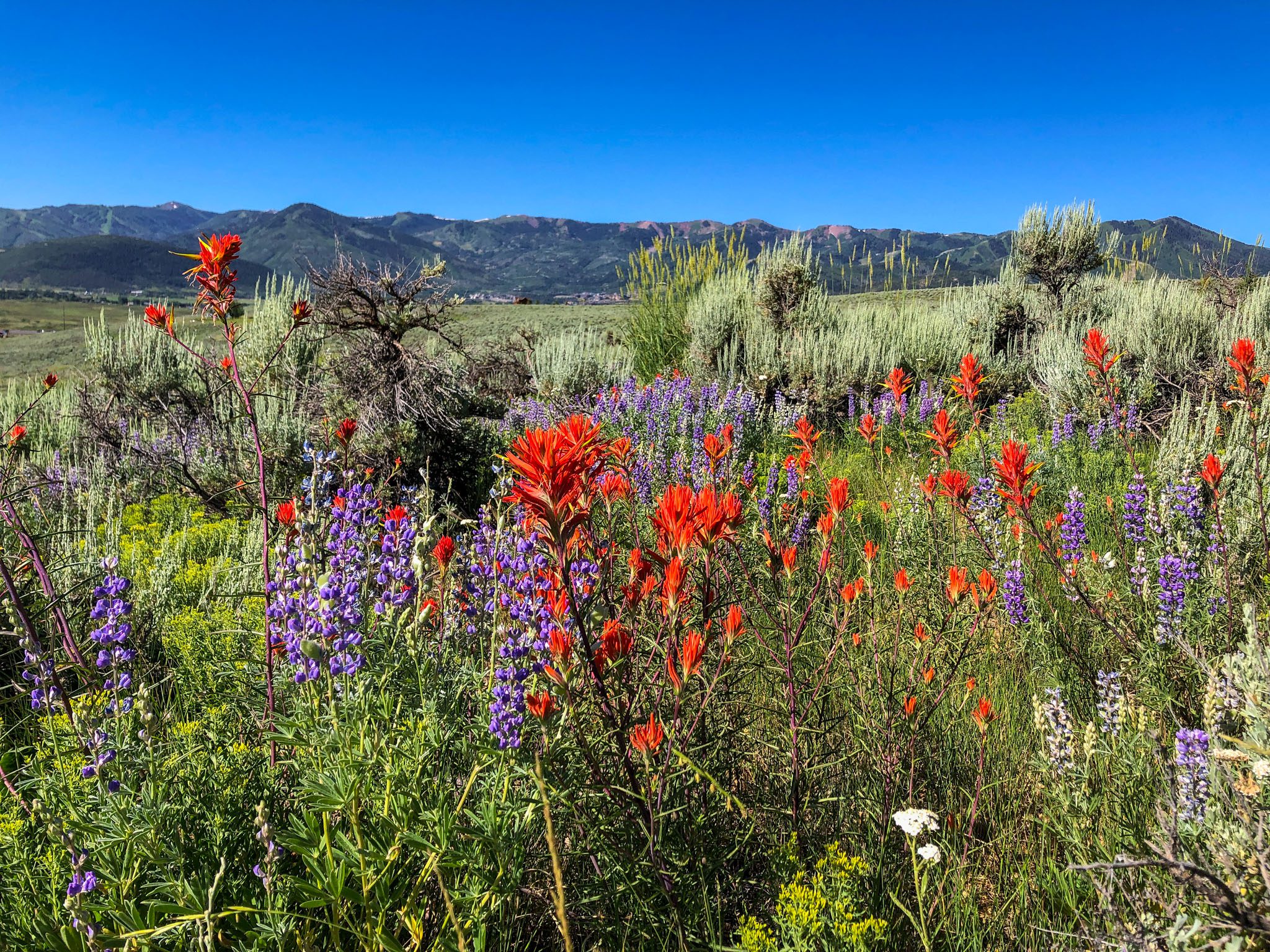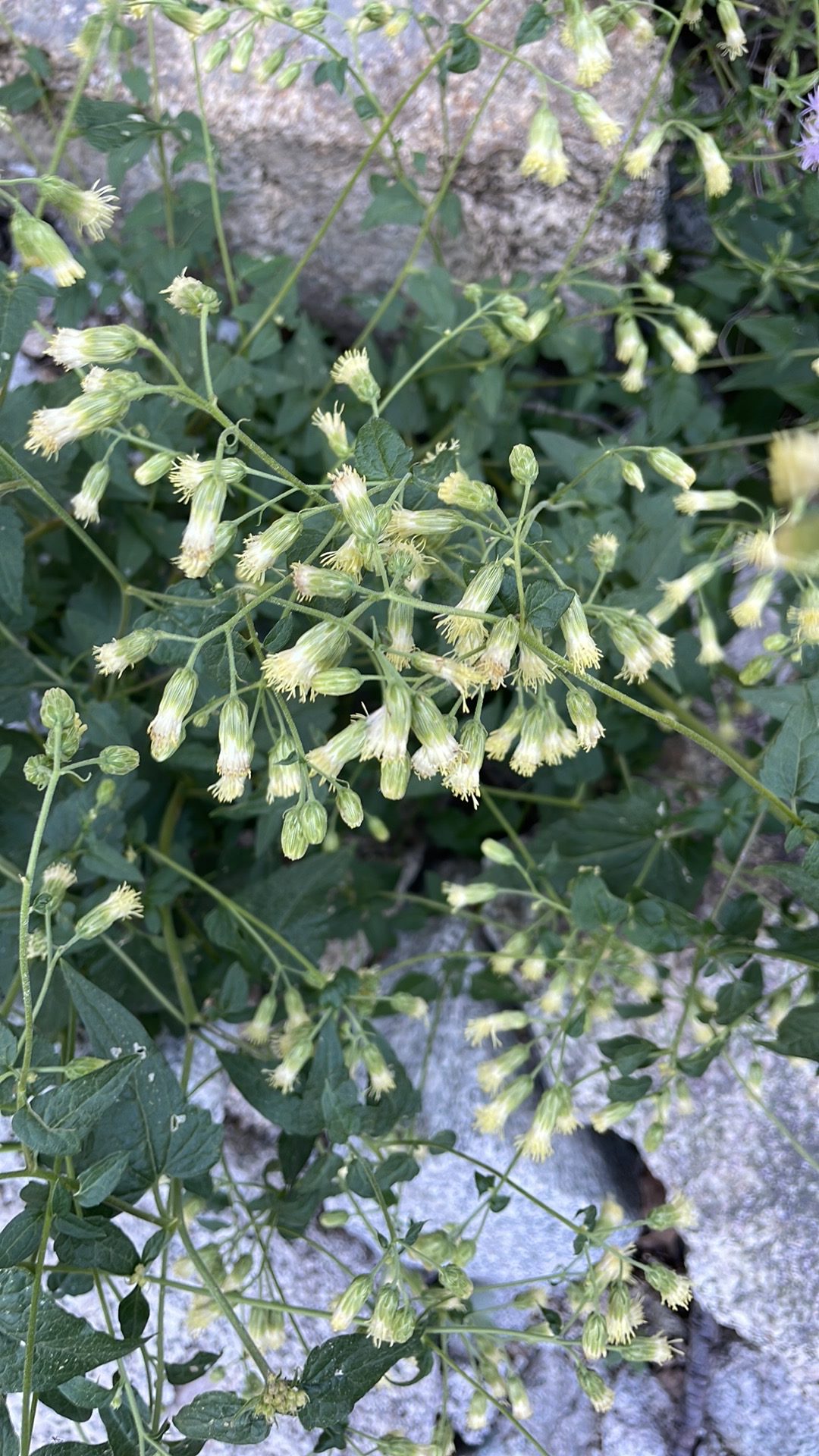Environment
Wildflower Wednesday: Arrowleaf balsamroot in bloom, Summit County’s iconic wildflower
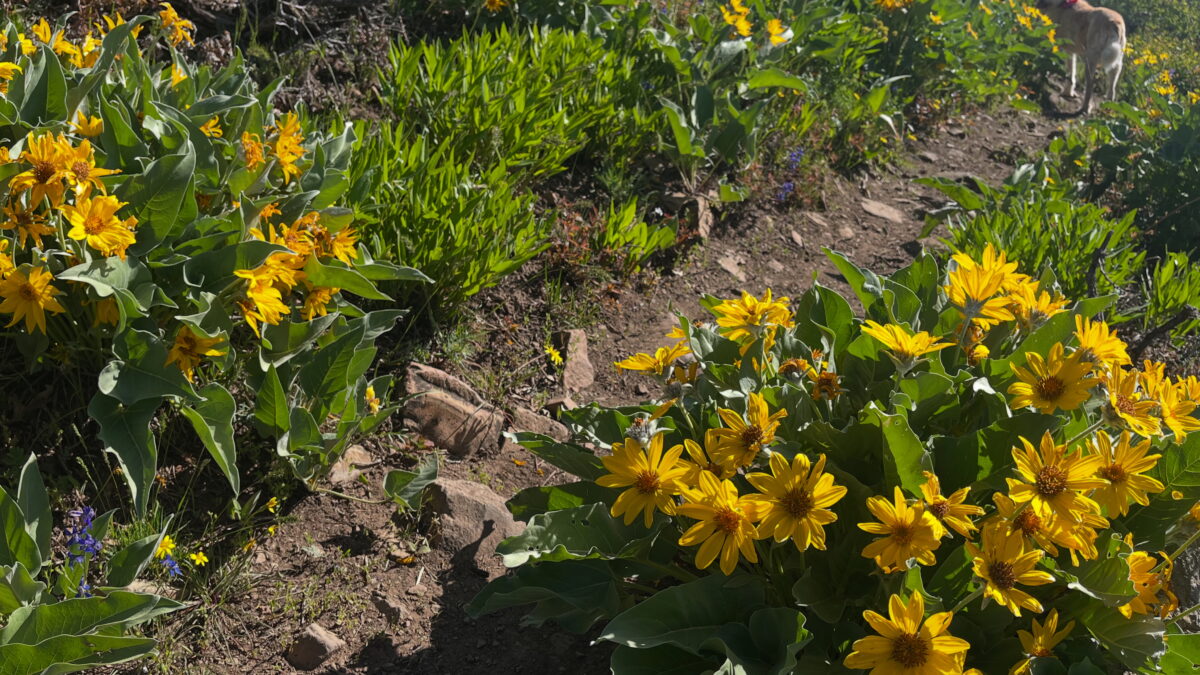
A burst of arrowleaf balsamroot lines the trail in Summit County is early summer’s golden invitation to explore the high desert in bloom. Photo: Rebecca Brenner
PARK CITY, Utah — As temperatures rise in June, Balsamorhiza sagittata, more commonly known as arrowleaf balsamroot, is lighting up Summit County’s trails with bursts of bright yellow blossoms, offering hikers a vivid welcome to summer in the high country.
Native plant, native settings
Arrowleaf balsamroot is a perennial plant native to western North America. According to the Bureau of Land Management, it thrives at elevations between 4,400 and 9,900 feet in Utah and favors open, well-drained soils in grasslands, sagebrush steppe, and open woodlands.
In Summit County, the plant can be seen along popular mid-elevation trails in Round Valley, Glenwild, Iron Mountain, and the periphery of Park City Mountain. These areas offer ideal conditions for the plant’s deep taproots and drought-hardy foliage to flourish.
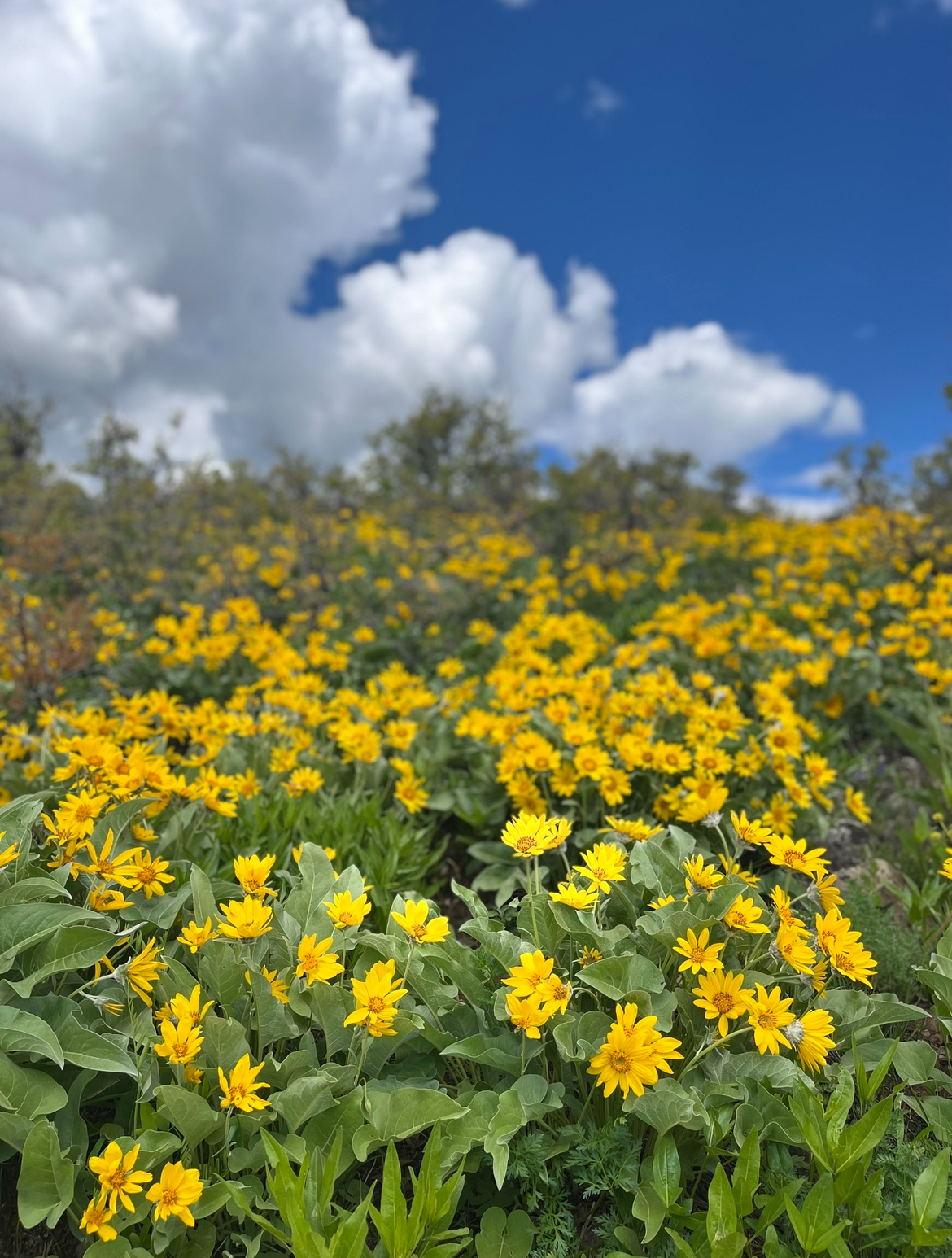
Distinctive appearance
The plant is easily recognized by its arrowhead-shaped, silvery-green basal leaves and its large, solitary yellow flower heads, which resemble small sunflowers. According to the Bureau of Land Management, each flower can range from 6 to 10 centimeters in width and is supported by a single upright stem that can reach heights of 80 centimeters.
The plant’s branching taproot, which may extend more than nine feet into the soil, allows it to survive dry conditions and regenerate after disturbances such as wildfire. The leaves, especially on their undersides, are coated in fine to rough hairs that help reduce water loss.
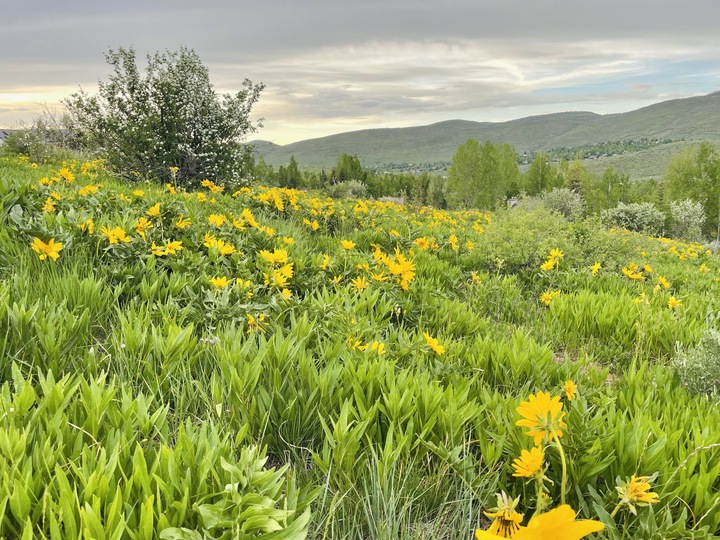
Ecological role and wildlife interactions
Arrowleaf balsamroot is considered a foundational species in early-season ecosystems. According to BLM plant ecology data, the flowers are an important nectar and pollen source for native bees, while deer and elk browse the plant’s leaves and flowers. Grazing animals often favor the blooms and developing seed heads in late spring and early summer.
“It’s not only a visual sign of the changing seasons—it’s also a seasonal delicacy for moose and deer,” said Wendy Fisher, executive director of Utah Open Lands. “When you see balsamroot blooming, you’re witnessing an entire ecosystem waking up.”

Cultural and traditional uses
Arrowleaf balsamroot has a long history of use by Indigenous peoples across the American West. According to ethnobotanical records compiled by multiple sources, including Wikipedia and iNaturalist, the Nez Perce, Kootenai, Salish, and Cheyenne used various parts of the plant for food and medicine. The young leaves were often eaten raw or cooked, the roots roasted or steamed, and the seeds consumed whole or ground into flour.
The plant was documented by early American explorers, including William Clark of the Lewis and Clark Expedition, who noted that Indigenous people ate the stem raw near the White Salmon River in 1806. Today, arrowleaf balsamroot is also recognized as the official floral emblem of Kelowna, British Columbia, where it is commonly referred to as the Okanagan sunflower.
Tips for hikers
To experience arrowleaf balsamroot in bloom in Summit County:
Where to go: Trails in Round Valley, Glenwild, and Iron Mountain are among the best for spotting current blooms.
When to go: The time to see arrowleaf balsamroot is now. Peak bloom typically runs from late May through June. The flowers are most open early in the morning and begin to close during the heat of the day.
How to protect: Stay on marked trails. Arrowleaf balsamroot is slow-growing and long-lived. Damaging just one plant could set back decades of growth.
With its bright yellow blooms, arrowleaf balsamroot brings beauty and ecological richness to Summit County’s landscapes. Whether you’re a seasoned naturalist or a casual hiker, catching this fleeting wildflower in bloom is one of the season’s quiet treasures.
Share your photos & videos with tips@townlift.com for a chance to be featured!
















